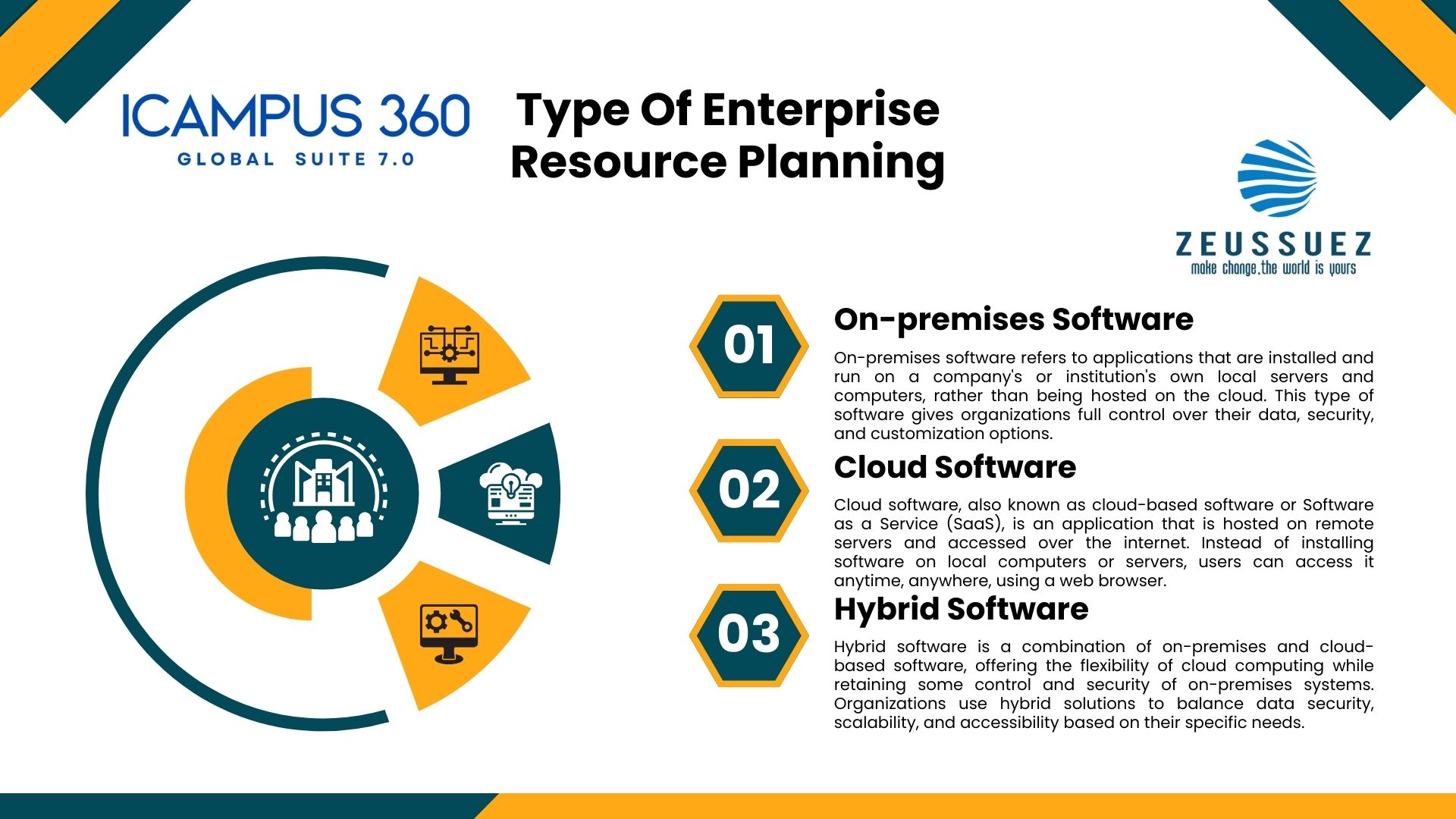Type Of Enterprise Resource Planning | Cloud Software
What is Cloud Software?
Cloud software, also known as cloud-based software or Software as a Service (SaaS), is an application that is hosted on remote servers and accessed over the internet. Instead of installing software on local computers or servers, users can access it anytime, anywhere, using a web browser.
Key Features of Cloud Software:
☁ Remote Accessibility – Access data and applications from any device with an internet connection.
☁ Automatic Updates – Software updates, security patches, and maintenance are managed by the provider.
☁ Scalability – Easily scale resources based on business needs without investing in hardware.
☁ Subscription-Based Pricing – Typically offered as a pay-as-you-go model, reducing upfront costs.
☁ Data Storage in the Cloud – Eliminates the need for on-premises storage and infrastructure.
Benefits of Cloud Software:
✅ Cost-Efficient – Lower upfront investment, no need for dedicated IT infrastructure.
✅ Flexibility & Mobility – Work from anywhere using any device.
✅ Security & Backup – Cloud providers offer robust security measures and automatic backups.
✅ Collaboration-Friendly – Teams can work together in real time, regardless of location.
✅ Quick Deployment – Faster implementation compared to on-premises software.
Examples of Cloud Software:
- Cloud ERP – NetSuite, SAP S/4HANA Cloud, Microsoft Dynamics 365
- Cloud Storage – Google Drive, Dropbox, OneDrive
- Cloud CRM – Salesforce, HubSpot, Zoho CRM
- Cloud Collaboration – Google Workspace, Microsoft 365, Slack
- Cloud Learning Management Systems (LMS) – Moodle Cloud, Blackboard, iCampus360.co
- Cloud Accounting – QuickBooks Online, FreshBooks, Xero
On-Premises vs. Cloud Software
| Feature | Cloud-Based Software | On-Premises Software |
|---|---|---|
| Hosting | Managed by third-party provider | Installed on local servers |
| Access | Accessible from anywhere | Limited to internal network |
| Control | Vendor-controlled | Full control by the organization |
| Cost | Subscription-based | Higher upfront costs, lower ongoing fees |
| Maintenance | Handled by provider | Requires in-house IT team |
| Security | High-level cloud security | Data security managed in-house |
Cloud software is ideal for businesses and educational institutions looking for scalability, flexibility, and cost savings without the burden of managing IT infrastructure.
